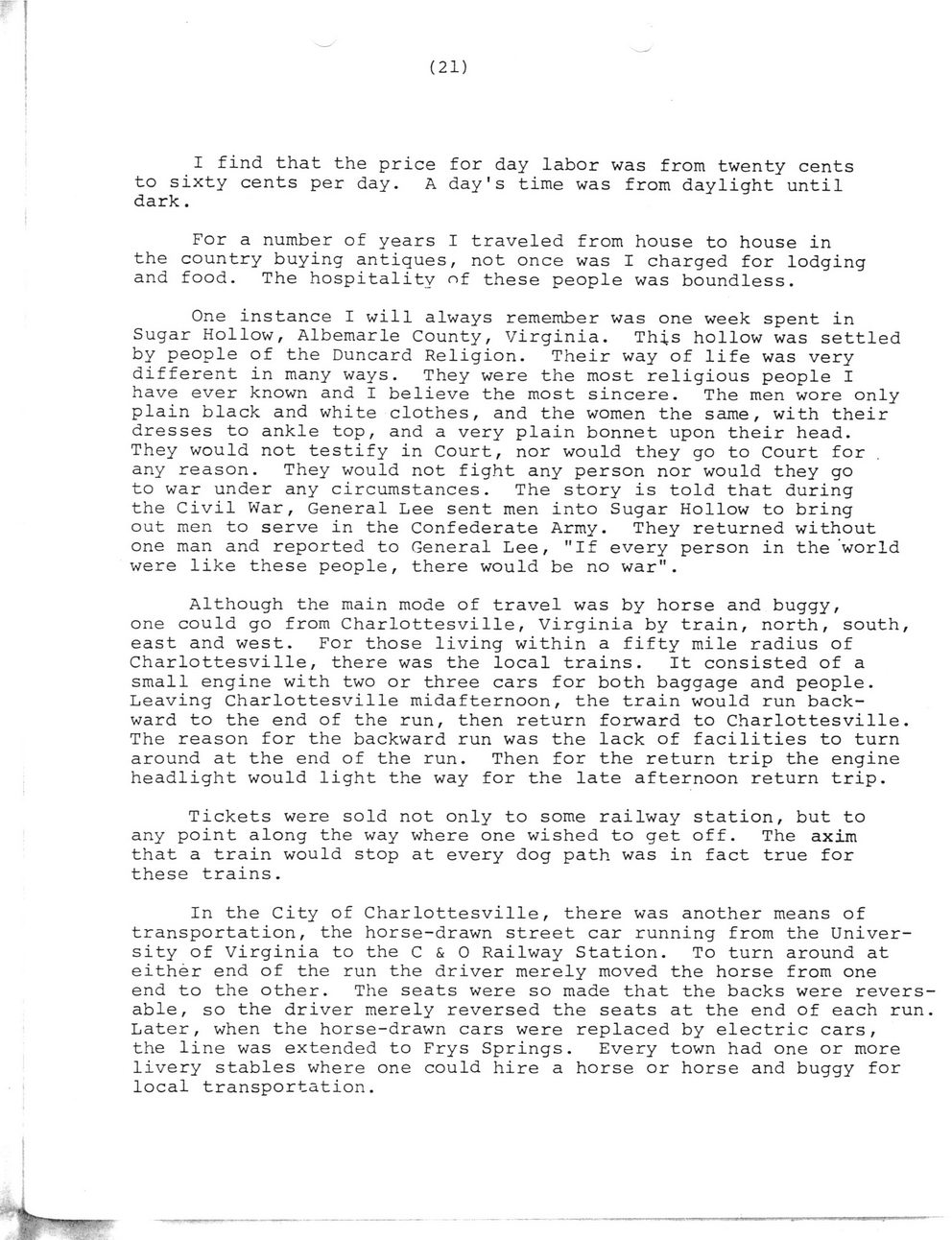This text was obtained via automated optical character recognition.
It has not been edited and may therefore contain several errors.
(21) I find that the price for day labor was from twenty cents to sixty cents per day. A day's time was from daylight until dark. For a number of years I traveled from house to house in the country buying antiques, not once was I charged for lodging and food. The hospitality of these people was boundless. One instance I will always remember was one week spent in Sugar Hollow, Albemarle County, Virginia. This hollow was settled by people of the Duncard Religion. Their way of life was very different in many ways. They were the most religious people I have ever known and I believe the most sincere. The men wore only plain black and white clothes, and the women the same, with their dresses to ankle top, and a very plain bonnet upon their head. They would not testify in Court, nor would they go to Court for any reason. They would not fight any person nor would they go to war under any circumstances. The story is told that during the Civil War, General Lee sent men into Sugar Hollow to bring out men to serve in the Confederate Army. They returned without one man and reported to General Lee, "If every person in the world were like these people, there would be no war". Although the main mode of travel was by horse and buggy, one could go from Charlottesville, Virginia by train, north, south, east and west. For those living within a fifty mile radius of Charlottesville, there was the local trains. It consisted of a small engine with two or three cars for both baggage and people. Leaving Charlottesville midafternoon, the train would run backward to the end of the run, then return forward to Charlottesville. The reason for the backward run was the lack of facilities to turn around at the end of the run. Then for the return trip the engine headlight would light the way for the late afternoon return trip. Tickets were sold not only to some railway station, but to any point along the way where one wished to get off. The axim that a train would stop at every dog path was in fact true for these trains. In the City of Charlottesville, there was another means of transportation, the horse-drawn street car running from the University of Virginia to the C & 0 Railway Station. To turn around at either end of the run the driver merely moved the horse from one end to the other. The seats were so made that the backs were revers able, so the driver merely reversed the seats at the end of each run Later, when the horse-drawn cars were replaced by electric cars, the line was extended to Frys Springs. Every town had one or more livery stables where one could hire a horse or horse and buggy for local transportation.

Carr, Hugh Turner My-First-80-Years-Aboard-The-Planet-Earth-029